| Article ID | Journal | Published Year | Pages | File Type |
|---|---|---|---|---|
| 2011823 | Pharmacological Reports | 2012 | 11 Pages |
BackgroundBuame [17β-(butylamino)-1,3,5(10)-estratrien-3-ol] possesses anticoagulant and antiplatelet activities that are potentially antithrombotic. Since its estrogenicity is unknown, it was evaluated by established methods.MethodsBuame (10, 100, 500, and 1,000 μg/kg), 17β-estradiol (E2) (100 μg/kg), or propylene glycol (10 ml/kg) were subcutaneously (sc) administered for three days to immature Wistar female rats (21 days old). The relative uterotrophic effect to E2 was 78 (E2 = 100) with a relative uterotrophic potency of 1.48 (E2 = 100). Adult ovariectomized Wistar rats received an sc injection at 8:00 h (reversed cycle) of: 7.5 μg of E2 (≈ 30 μg/kg), buame (≈ 750, 1,500, 3,000 μg/kg), or corn oil (≈ 1.2 ml/kg). After 24 h, progesterone (4–5 mg/kg) was administered. Sexual receptivity was assessed 5 to 7 h later, and the lordosis quotient (LQ; number lordosis/number mounts × 100) was evaluated.ResultsBuame induced lordosis (LQmax 85 ± 9; ED50 952 ± 19 μg/kg) and E2 LQmax 56 ± 8; ED50 10 ± 2 μg/kg; the relative LQpotency was 0.51 (E2 = 100). Buame competed with [3H]E2 for the estrogen receptor (Buame RBA = 0.15 and Ki = 5.9 × 10−7 M; E2 RBA = 100; Ki = 6.6 × 10−9 M). Buame increased MCF-7 cells proliferation, from 10−11 to 10−9 M, its proliferative effect was 1.73–1.79 (E2 = 3.0–3.9); its relative proliferative effect to E2 was 33–40% (E2 = 100%) and relative potency 10.4–10.7 (E2 = 100). Tamoxifen and fulvestrant (ICI 182,780) inhibited buame's proliferation indicating mediation through estrogen receptors in this response.ConclusionBuame is therefore an estrogen partial agonist with a weak estrogenic activity.
